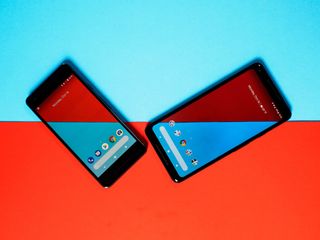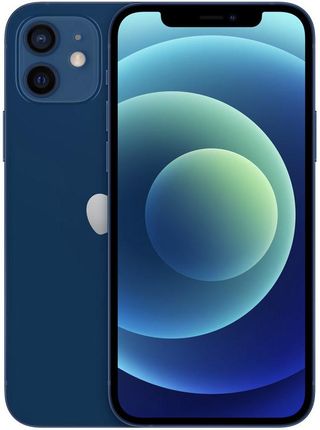Pixel 2, #ColorGate, and OLED is HARD

I bought most of Google's Nexus phones, starting with the Nexus One. I bought the original Pixel. I pre-ordered the Pixel 2 XL right after the event. Now I'm thinking of canceling that order. The reason? It seems like Google chose to ship bad displays on their flagship phones.
Before you get your lazy, dismissive "fanboy", "biased", or "hater" retorts primed, it's not me who's saying that. It's the reviewers and Android experts.
Andrew Martonik, writing for Android Central:
Google's biggest selling point on the Pixel 2 XL's display was its color accuracy and the fact that it could reproduce 100% of the DCI-P3 color space. And to my eyes, that's clearly where all of the tuning time went: accuracy above all else. Because this screen, I hate to say, looks a bit dull and washed out.
Since Google went with pOLED (plastic substrate OLED), it also has issues with viewing angles:
No matter how you feel about the colors you'll notice an apparent color shifting when viewing the phone off-axis at all, to the point where holding the phone at an angle the colors at the top of the display (further from you) are more blue/green than what's at the bottom.
Then there's this:
The 2880x1440 resolution is plenty high, but the Pixel 2 XL exhibits the same sort of soft grain and grit as the V30 on white backgrounds when scrolling — one of those things you can't un-see once it's been pointed out. It's something we expect to see on super low-end phones, but not anything remotely high-end in the past few years — and it's surely not a problem that Samsung has with its OLED displays nowadays.
Alex Dobie, also from Android Central, agrees:
So Pixel 2 is the best small Android phone you can buy. Easily
Pixel 2 XL? It's a bit more complicated. Screen has issues, is not $850-levelSo Pixel 2 is the best small Android phone you can buy. Easily
Pixel 2 XL? It's a bit more complicated. Screen has issues, is not $850-level— Alex Dobie (@alexdobie) October 17, 2017October 17, 2017
It's not just Android Central either. Dieter Bohn, writing for The Verge:
Master your iPhone in minutes
iMore offers spot-on advice and guidance from our team of experts, with decades of Apple device experience to lean on. Learn more with iMore!
The charitable way to put it is that Google opted for something practical when it could have gone bolder. The less charitable way to put it is that the Pixel 2 XL has a bad screen with bad color tuning.
Vlad Savov, also from The Verge:
Have to get this off my chest:
The Pixel 2 XL screen is an inexcusable garbage fire that sears my very soul and spoils a great phone.Have to get this off my chest:
The Pixel 2 XL screen is an inexcusable garbage fire that sears my very soul and spoils a great phone.— Vlad Savov (@vladsavov) October 17, 2017October 17, 2017
Vlad followed up on Circuit Breaker:
Look at that New York Times icon in the image above. Stop flinching and really look at it, soak in the kaleidoscope of colors washing over it. Just to make sure we're all on the same page, I'm seeing a haze of green in the middle of the gothic "T", which then blooms into a red that eventually transitions into the white that the icon is supposed to be. But the fun isn't over; when you get up real close, you'll see the edges of the icon are all fringed by a sort of purply-red and, again, green. The neighboring heart icon, which is also supposed to be white, presents us with a crosshatch of red and green and white micropixels.Does that look like 2017 to you?
Ron Amadeo, writing for Ars Technica:
The Pixel 2 XL display has a consistent "dirty" grain to it, and you can see it all the time if you know what to look for. But the dirt is most noticeable in a dark room with the screen at 0-percent brightness, which is a totally normal, "night-time" use case. Any time there's a solid color background—like, say, in a list with a white background—you'll see the grain. It jumps out when you're scrolling, when the text moves but the layer of grain is stationary. If you're not in the "night-time" scenario, the grain is much less noticeable. But if you look closely, especially during scrolling, you can see it is always present.
There also appear to be burn-in issues with the Pixel 2 XL display. That's something not atypical of OLED, but also something vendors try to mitigate against.
That's some pretty wild OLED burn-in on the Pixel 2 XL after maybe 7 days of full-time use pic.twitter.com/EPJTs6D0KgThat's some pretty wild OLED burn-in on the Pixel 2 XL after maybe 7 days of full-time use pic.twitter.com/EPJTs6D0Kg— Alex Dobie (@alexdobie) October 22, 2017October 22, 2017
So, to be clear, there seem to be four separate issues with the Pixel 2 XL display:
- Color calibration that many find dull or off-putting. (Google decision that can be changed in a software update.)
- "Dirty" grain-like artifacts in the panel. (Issue with LG pOLED that can potentially be mitigated somewhat by a software update.)
- Off-axis color shifting. (Limitation of LG pOLED that can't be fixed by a software update.)
- Burn in. (Issue with LG pOLED that can potentially be mitigated somewhat by a software update.)
In other words, Google sourced atoms but might be able to mitigate it somewhat by shipping better bits.
At first, I was tempted to simply cancel my Pixel 2 XL order and get the regular sized Pixel 2 instead.
Russell Holy, also from Android Central, disabused me of that option:
About the Pixel 2 being "more accurate" pic.twitter.com/qPtJKsH5KjAbout the Pixel 2 being "more accurate" pic.twitter.com/qPtJKsH5Kj— Russell Holly (@russellholly) October 17, 2017October 17, 2017
It's ironic since, when Android Oreo was announced, many praised its new color management features. Unfortunately, that doesn't seem to have helped with either of these phones. Or either of these panels.
Looks like the Pixel 2 XL suffers from the same problem as the V30: LG still cannot consistently make a quality OLED display at scale.Looks like the Pixel 2 XL suffers from the same problem as the V30: LG still cannot consistently make a quality OLED display at scale.— DΞRΞK ⚡ KΞSSLΞR (@derekakessler) October 17, 2017October 17, 2017
That's very likely the case since the Google Pixel 2 XL and LG V30 both use the same LG panel. In other words, the panel is doing as much as it can, it just can't do very much.
To be fair, not every reviewer mentioned the issue. I don't know how much of that is sincere and how much is the "grading on a curve" problem I called out last year. Some reviewers also commented on the "cheap" feel, due to the coating Google applied to the unibody, and insufficient battery life, so it could just be general inconsistency at work. But that's not good either.
I used #ColorGate facetiously in the title but I have no doubt that had reviewers found the same issues with the iPhone 8 and iPhone 8 Plus displays, that hashtag would be trending and showing up in headlines across the web. And to be clear, I'm not saying Apple is treated unfairly. I'm saying every vendor should be treated the same way, otherwise it's potential customers like me who are being treated unfairly.
Granted, I live primarily on iPhones, and Apple is famously obsessed when it comes to panels. It individually calibrates its current LCD panels at the subpixel level, it works to achieve the widest viewing angles possible, it applies not only proven color management systems, but technologies like TrueTone that match the ambient color temperature so whites don't look yellow or blue — they look paper white.
That's why I think the Pixel displays will bother me so much.
OLED is hard. The technology has some amazing qualities but also has some real gotchas if your hardware game isn't tight. A display is the sum of many parts: Panel, hardware engineering, calibration, color management, software system, and more. Google's Android Oreo has made huge strides forward with sRGB Extended, 16-bit float. There's stuff in there I hope Apple adopts as well. But if the panel is substandard and the calibration and accuracy are off, none of that matters. It's like putting stone tires on a Ferrari.
It's the same reason I'm really excited to spend more time with iPhone X. Apple waited a long time to bring OLED to iPhone, even after using it on Apple Watch and Touch Bar. When Apple did, it went with a Samsung panel, which is the best OLED in the industry right now, and then added all the display tech the company has spent the last few years building out, including sub-pixel anti-aliasing, Apple's own color management, TrueTone, and more. It's like putting racing tires on a Formula 1.
Meanwhile, my Pixel 2 XL is only scheduled to ship in December, because Canada, so I have some time to decide. Right now I'm leaning towards canceling, but we'll see. There are some things that really excite me about it, like the Pixel Vision Core that hardware accelerates HDR+, for example.
I want a really great Google phone — and one that doesn't demand all my personal data before it will enable features, by the way — and I want Google to want that too.
Updated to include burn-in issues with Pixel 2 XL display.

Rene Ritchie is one of the most respected Apple analysts in the business, reaching a combined audience of over 40 million readers a month. His YouTube channel, Vector, has over 90 thousand subscribers and 14 million views and his podcasts, including Debug, have been downloaded over 20 million times. He also regularly co-hosts MacBreak Weekly for the TWiT network and co-hosted CES Live! and Talk Mobile. Based in Montreal, Rene is a former director of product marketing, web developer, and graphic designer. He's authored several books and appeared on numerous television and radio segments to discuss Apple and the technology industry. When not working, he likes to cook, grapple, and spend time with his friends and family.
Most Popular




